
Salty Sam’s Fun Blog for Children
Number 218
Charles Darwin
Hello Everyone

Just occasionally, you will find a house that has virtually stood still in time.
One such house stands in the Kent countryside. You may have never heard of it, but you may have heard of the man who lived there. His name was Charles Darwin. He lived from 1809 – 1882.
He was a scientist whose observations helped us to understand much more about how nature works. He has been described as one of the most influential men in human history and was honoured at the end of his life with burial in Westminster Abbey.
There is a special name for the kind of scientist he was.
The word is naturalist.
He was also a geologist, which is a person who studies rocks.
His work led him to conclude that nature develops through evolution, in a system he called ‘natural selection’ and that all species of life have descended over time from common ancestors.
His theory was published in a very famous book called On the Origin of the Species by Means of Natural Selection which was published in 1859. These were revolutionary ideas, but in the years that followed, other scientists and the general public came to understand and agree with what Darwin believed.
But his theory that humans were descended from a type of ape upset some people. He was mocked in cartoons in newspapers at the time because they thought the theory disagreed with the teachings of the Bible. ln fact, Darwin respected the Bible and often quoted it in his writings. He recognised it as a good guide for morals (a way people should behave) but questioned its historical accuracy.
As a boy, Darwin loved collecting pebbles, wild birds’ eggs (illegal today) and everything else that interested him. He loved reading his father’s natural history books and exploring the countryside around Shrewsbury. He also liked playing with Erasmus, his brother, in the garden shed where they set up chemistry experiments.
Later, Darwin started to train as a doctor at University in Edinburgh, but did not enjoy his studies at all, and started to neglect them and concentrate on studying the natural world instead.
He learnt taxidermy from a freed, black slave called John Edmonstone. Taxidermy is the practice of taking the skins of dead animals and reconstructing them on a model to recreate, as near as possible, an animal that looks quite life-like. You can sometimes see animals like this in natural history museums. ln order to be successful at taxidermy you must study carefully what the shape of an animal looks like and how the animal stands and moves.
Darwin also helped with studies on marine creatures in the nearby river the Firth of Forth.
His father was annoyed that Charles was not working hard enough at university and sent him to Cambridge instead where he was to study to become an Anglican parson. But Darwin showed little interest in becoming a man of the church and preferred collecting beetles (which was a popular hobby of the time).
Later, he was invited to join a voyage of discovery on a ship called HMS Beagle; and his father eventually agreed to pay for his trip.
The expedition planned to chart the coastline of South America and Darwin was to use his expertise to investigate rock formations and make natural history collections for study.
The voyage began in December 1831 and lasted nearly five years.
Darwin suffered terribly from seasickness but made many notes and he sent letters and specimens back to Cambridge whenever he could.
Darwin saw the tropical rain forests of Brazil, he went to Patagonia at the southern tip of South America and the Caribbean and he found buried fossils of huge extinct mammals.
ln Chile, he experienced an earthquake, and high up in the Andes Mountains he saw seashells and fossil trees that had grown on a sand beach. This gave him evidence that showed that land can move and change. He concluded that the continent was rising out of the sea.
On the Galapagos lslands, he found that different islands could have different variations of the same types of animals. Giant tortoises on one island that grazed on the ground could have quite flat shells, whereas the shells of the tortoises on another island could have an arch at the front. This arch allowed the tortoise to lift its head up to eat vegetation from bushes above its head, as there was not so much food on the ground to eat.
He noticed that finches on different islands had different shaped beaks to enable them to eat the different kinds of food that were available to them.
This gave him the idea that the evolution of species allows them to adapt to their surroundings in order to become more successful and, therefore, secure their survival.
This same idea is used to breed animals in captivity. They become different – and sometimes better in some way.
This is why we have so many breeds of dog and sheep and cows for example.
When the Beagle docked in Falmouth in October of 1836, Darwin’s return was celebrated by the scientific community.
He was keen that his work and collections should be displayed.
Darwin worked very hard to produce a lot of writings to explain his findings and theories.
He worked too hard and became ill.
After a rest he was able to continue his work and later married his cousin Emma.
They had ten children. Two died when they were young.
This devastated their parents and Darwin wondered whether their children had weaknesses due to their parents being from the same family.
However, the other children grew up and went on to have very successful lives.
Between 1826 and 1828, the Zoological Society of London established the beginnings of the London Zoo in Regent’s Park. Among the visitors was Darwin who was a fellow (member) of the society. He particularly liked the orang-utan – the first ever seen in Europe.
ln 1847, the paying public were allowed into the zoo and today the zoo does much work in animal research and the preservation of endangered species.
By the start of 1856, Darwin was investigating whether eggs and seeds could survive travel across sea water to spread species across oceans.
ln 1861, he became interested in how insects pollinated flowers.
He was also fascinated in how worms had an effect on the soil and landscapes. He did a lot of research on worms for many decades.
He and his family moved to Down House in 1842. He thought the house looked ‘oldish and ugly’ but it was cheap and surrounded by lovely countryside so he and his wife bought it and remodelled it.
ln his photograph, Darwin looks as if he might have been a strict Victorian father, but actually he was very kind and loving to his wife and children and they all lived happily together.
The house and garden were where Darwin carried out his experiments and his family helped with them. He set up the study of biology in the way that children and scientists study it today.
He delayed publishing his theories about evolution for a long time because he knew that they would make some people unhappy, so he continued to gather facts for twenty years before he did so.
But bouts of illness were to blight the latter part of Darwin’s life and often interfered with his work and travels.
He might have picked up Chagas disease in South America and he was once bitten by a blood-sucking Benchuca bug, but nobody knew what was wrong with him at the time. They thought it might be the strain of his work that caused him to keep falling ill.
He died at Down House in April 1882.
He was commemorated with a life-size statue in the Natural History Museum in London and as the figure on the back of the ten pound note.
There is also a statue of Darwin in front of Shrewsbury Library. The building used to be Shrewsbury School, which Darwin went to as a boy.
There is a Darwin College at Cambridge University.
Bye bye everyone – don’t forget to subscribe to my blog!
lf you like my blog, please support it by telling all your friends and followers about it.
Thank you!
And see you again next Fun Friday!
Love and kisses
Salty Sam

www.christina-sinclair.com


Bill and Bob’s Joke of the Week![]()
![]()
Bob: Why did the dinosaur cross the road?
Bill: l don’t know. Why did the dinosaur cross the road?
Bob: Because they weren’t any chickens in those days.

Salty Sam © Christina Sinclair 2015
Unauthorized use and/or duplication of material from this blog without express and written permission from this blog’s author and owner is strictly prohibited.
Links may be used to www.christina-sinclair.com

Picture Gallery
 Darwin as a young man
Darwin as a young man
 HMS Beagle
HMS Beagle
 The Voyage of the Beagle
The Voyage of the Beagle
 A giant tortoise from the Galapagos Islands
A giant tortoise from the Galapagos Islands
 Orang-utan
Orang-utan
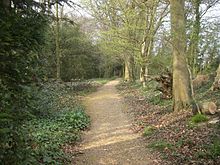 Darwin’s “sandwalk” at Down House was his usual “Thinking Path”.
Darwin’s “sandwalk” at Down House was his usual “Thinking Path”.
 Charles Darwin at the Natural History Museum in London
Charles Darwin at the Natural History Museum in London
 Charles Darwin in Shrewsbury
Charles Darwin in Shrewsbury
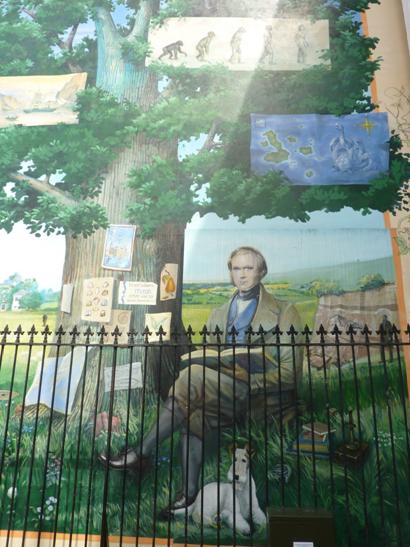 Charles Darwin remembered in Bromley town centre today
Charles Darwin remembered in Bromley town centre today
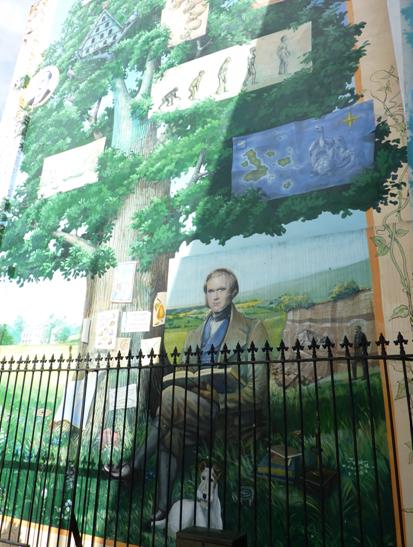 Bromley in London
Bromley in London
 Charles Darwin wall mural
Charles Darwin wall mural
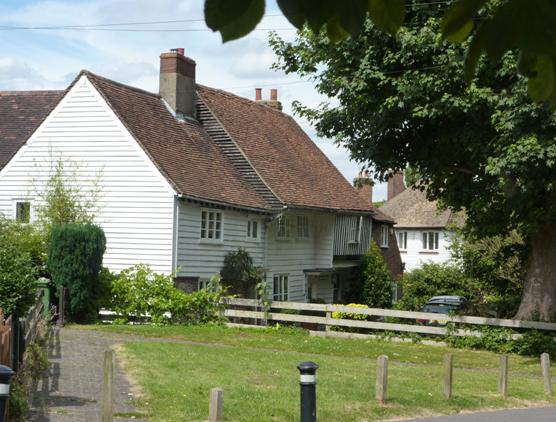 The lovely village of Downe in Kent
The lovely village of Downe in Kent
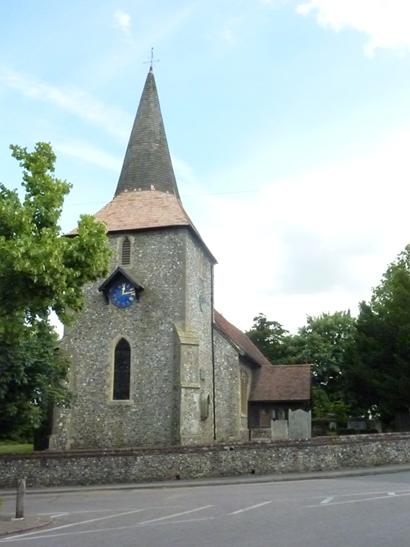 The church built around 1290
The church built around 1290
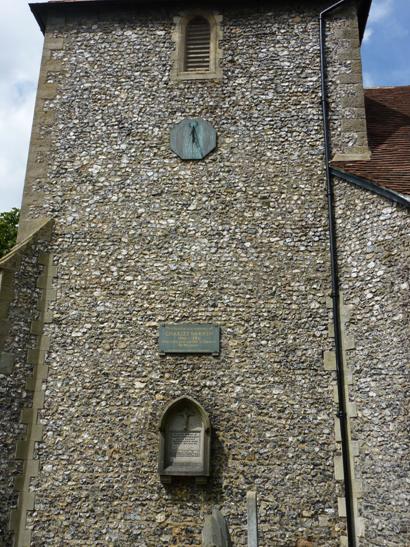 The sundial on the tower
The sundial on the tower
 The plaque on the church wall
The plaque on the church wall
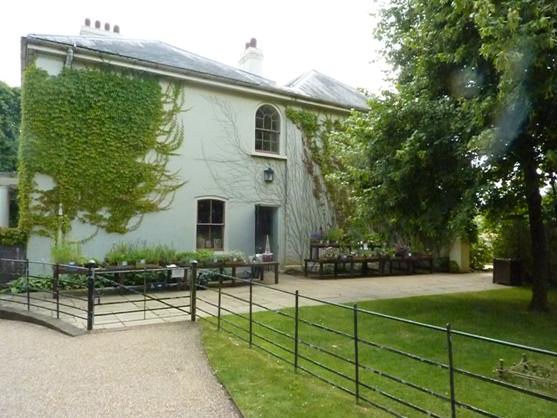 Downe House
Downe House
 Downe House from the back lawn
Downe House from the back lawn
 Downe House with rooms set out from the Victorian era
Downe House with rooms set out from the Victorian era
 Darwin’s bedroom
Darwin’s bedroom
 Darwin’s bedroom
Darwin’s bedroom
 Darwin’s bedroom
Darwin’s bedroom
 The view from his bedroom window
The view from his bedroom window
 The back lawn
The back lawn
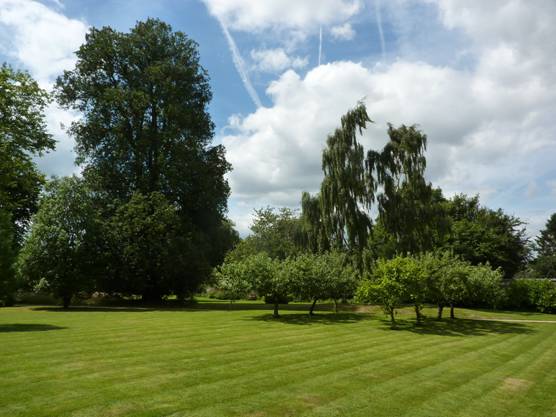 The gardens at Downe House
The gardens at Downe House
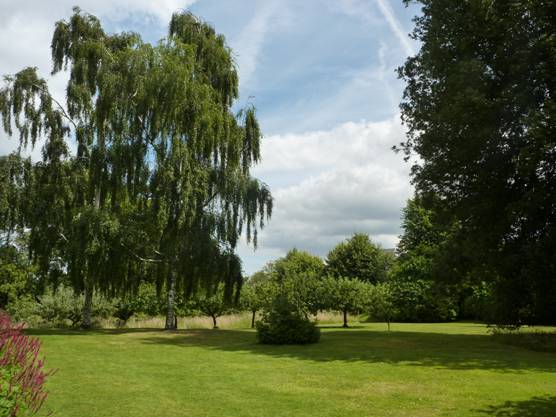 The side lawn
The side lawn
 The greenhouse
The greenhouse
 The surrounding countryside
The surrounding countryside
 The pathway running up to the woods
The pathway running up to the woods
 A view of the back of the house from the fields behind
A view of the back of the house from the fields behind


 THE SALTY SAM NEWS DESK
THE SALTY SAM NEWS DESK

This week Auntie Alice has been knitting again and this time she has made the children a knitted dog each.
Each dog was a different colour and she left the children to give them names.
She needed a sit down after the excitement of the boat business launch last week.
![]()
The children told Miss Pringle about the way they were helping Captain Jack launch his new business a few weeks ago and it gave her an idea for a wonderful new class project.
First, Miss Pringle and her class went to the Rocky Bay Library and did lots of research on the history of Rocky Bay.
They took lots of notes.
Then Miss Pringle arranged for some people who had lived in Rocky Bay to come into the classroom and be interviewed by the children.
The visitors told the children about their memories of growing up in Rocky Bay
The children took lots of notes and photographs too.
Then they went on a walk around the town and took lots more photographs of important landmarks.
The best work was put up on a notice board in the entrance hall of the school just before everyone went off on their Easter holidays.
The board is called The History of Rocky Bay.
It really looks good and is very interesting to read.

If you would like one of these dogs too, they are really very easy to knit…
NEWSDESK MINIMAKE
A KNITTED DOG
First take two 30cm pipe cleaners; bend the ends to the middle and bend the pipe cleaner in the middle to make an upside down ‘v’ shape with the ends on the inside.
DOG SIDE (KNIT TWO)
Using 4mm knitting needles and dog-coloured (or not) dk yarn cast on 8 stitches
Knit 14 rows of garter stitch
Cast on 12 stitches knit to end
Knit 11 more rows in garter stitch on these 20 stitches
Cast off 8 stitches knit to end
Knit 11 more rows in garter stitch on these 12 stitches
Cast on 8 stitches knit to end
Knit 11 more rows in garter stitch on these 20 stitches
Cast off
INSIDE OF LEGS (KNIT TWO)
Using 4mm knitting needles and dog-coloured (or not) dk yarn cast on 8 stitches
Knit 28 rows of garter stitch
Cast off
EARS (KNIT ONE)
Using 4mm knitting needles and dog-coloured (or not) dk yarn cast on 7 stitches
Knit 44 rows of garter stitch
Cast off
TIP
Slip stitch the first stitch of every row to ensure you create neat edges to your knitting.
TAIL (MAKE ONE)
Crochet 10 chains into a length of yarn and pull one end of left over yarn into tail chains to neaten
TO MAKE UP
- Putting wrong sides together, sew around the dog’s body using over-sew stitching leaving the back open (but sew along the top of the head)
- Sew on face features using yarn make the eyes with French knots and over-sew the point at the top of the face to make a nose
- Sew the ears onto the top of the head across the centre of the ears piece of knitting
- Sew the tail to the top of the back using the yarn left from one end of the length of crochet
- Push the pipe cleaners into the legs to make the dog stand up
- Stuff the head and lightly stuff the body
- Sew up the back


And lastly Happy Easter to all of you!
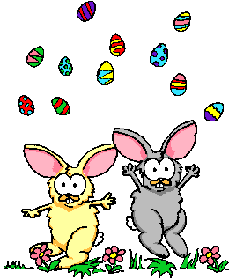

*********************
TO ADVERTISE ON THIS BLOG
PLEASE CONTACT:
christina.sinclair.ads@aol.co.uk
*********************


Quick Quiz
Fill in the gaps to find breeds of dog…
A _ S _ T _ A _
B _ A _ L _
H _ S _ Y
N _ W _ O _ N _ L _ N _
L _ B _ A _ O _
S _ A _ l _ L
L _ R _ H _ R
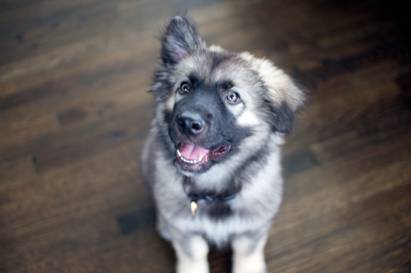
First dog



lt’s the Weekend!
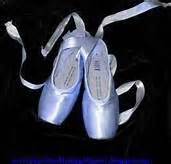
HOW TO MAKE A BALLET PRACTlCE OUTFlT FOR A 12” DOLL
Last week’s blog post featured a ballet outfit.
Here is an outfit for ballet practice.
BALLET CARDIGAN BACK (KNIT ONE)
Using 4mm knitting needles and white dk yarn cast on 15 stitches
Knit 2 rows of garter stitch
Knit 16 rows of garter stitch
Cast off
BALLET CARDIGAN FRONTS (KNIT TWO)
Using 4mm knitting needles and white dk yarn cast on 15 stitches
Knit 4 rows of garter stitch
Decrease 1 stitch at the beginning of the next row
Knit 1 row
Repeat these last 2 rows 9 times (5 stitches)
Cast off
BALLET CARDIGAN SLEEVES (KNIT TWO)
Using 4mm knitting needles and white dk yarn cast on 12 stitches
Knit 2 rows of garter stitch
Knit 6 rows of stocking stitch
Cast off
TO MAKE UP
With right sides together and using over-sew stitching
Sew up shoulder seams
Sew the tops of the sleeves to the shoulders
Sew under arm and side seams
Crochet 30 chains into a length of white yarn twice
Tie one end of each chain to the bottom of the fronts and neaten the other end of the chain – these cords tie around the back of the doll
BALLET LEGGINGS (KNIT TWO)
Using 4mm knitting needles and pink dk yarn cast on 12 stitches
Purl 1 row
Purl 1 row
Knit 8 rows of stocking stitch
Increase 1 stitch at the beginning of the next 2 rows of stocking stitch
(14 sts)
Knit 8 rows of stocking stitch
Increase 1 stitch at the beginning of the next 2 rows of stocking stitch
(16 sts)
Knit 10 rows of stocking stitch
Decrease 1 stitch at the beginning of the next 2 rows of stocking stitch
(14 sts)
Knit 6 rows of stocking stitch
Change to 3¾mm knitting needles
Knit 1, purl 1 to end to create ribbing
Repeat this row 3 times (4 rows of ribbing)
Cast off
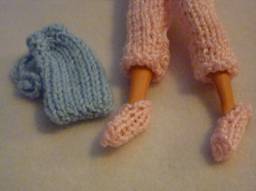
BALLET SHOE BAG (KNIT ONE)
Using 4mm knitting needles and pale blue dk yarn cast on 16 stitches
Knit 14 rows of stocking stitch
Knit 4 rows of garter stitch
Cast off
TO MAKE UP
Sew up bottom and side seams
Crochet 40 chains into a length of blue yarn and thread along between the two rows of garter stitch
Tie the ends of the cord together and neaten the ends of the yarn then pull the end of the cord round to be inside the bag
The pattern for the ballet shoes are on last week’s blog post.


Please note that the material on this blog is for personal use and for use in classrooms only.
It is a copyright infringement and, therefore, illegal under international law to sell items made with these patterns.
Use of the toys and projects is at your own risk.
©Christina Sinclair Designs 2015


Quick Quiz Answers
B E A G L E
H U S K Y
L U R C H E R
N E W F O U N D L A N D
A L S A T l A N
L A B R A D O R
S P A N l E L

(Lurchers.blogspot.com)


